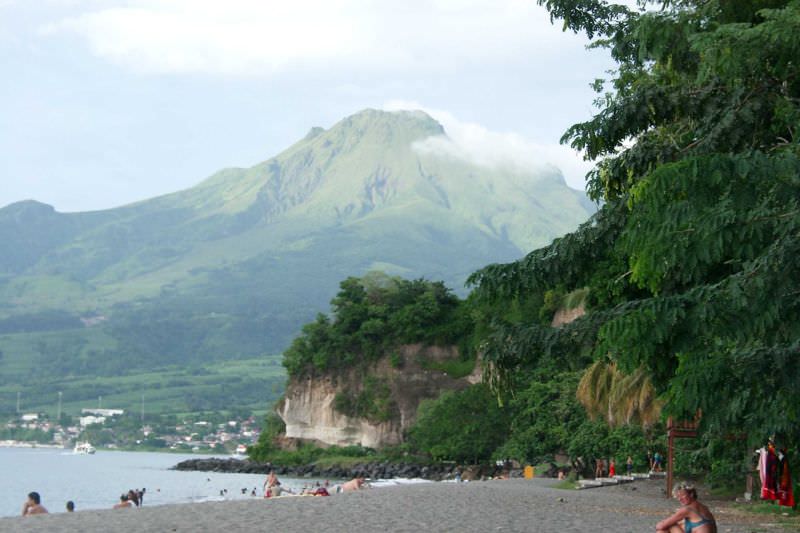[/caption]
Mount Pelee, on the island of Martinique in the Caribbean is one of those volcanoes with such a famous and devastating eruption, that a whole class of eruptions has been named after it. In 1902, it was the source of the worst volcanic disaster of the 20th century when a pyroclastic flow blasted down its flanks and killed more than 30,000 people destroying the town of Saint-Pierre.
The volcano has an elevation of 1,397 meters, and is part of a chain of volcanoes that stretch from Puerto Rico to Venezuela. This is the point where the Caribbean Plate Meets the Atlantic Oceanic crust belonging to the South American Plate. With all this tectonic action, there are many active volcanoes in the region. Mount Pelee is a common stratovolcano, composted of many layers of lava flows and fragmented volcanic debris. The current cone formed in the last 3000 years after a previous cone collapsed in an eruption similar to Mount St. Helens.
Inhabitants of Martinique could see evidence that Mount Pelee was awakening in 1900 when activity on the volcano increased. There were relatively minor steam eruptions, and there were several minor blasts of cinders and ash. There were several larger eruptions, but these were just setting the stage for the big eruption on May 8, 1902. Observers saw the side of Mount Pelee detonate, with a dense black cloud of ash shooting out horizontally. This sent a pyroclastic flow down the slopes of the volcano, reaching and destroying the town of Saint-Pierre within a minute.
Vulcanologists have named an entire class of eruptions after what happened on Mount Pelee. Pelean eruptions describe when a volcano has a horizontal explosion on its flanks, sending out pyroclastic flows. They’re some of the most dangerous eruptions in the world.
We have written many articles about volcanoes for Universe Today. Here’s an article about pelean eruptions, and here’s an article about Mount Pinatubo.
Want more resources on the Earth? Here’s a link to NASA’s Human Spaceflight page, and here’s NASA’s Visible Earth.
We have also recorded an episode of Astronomy Cast about Earth, as part of our tour through the Solar System – Episode 51: Earth.

